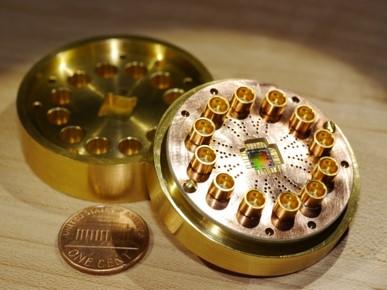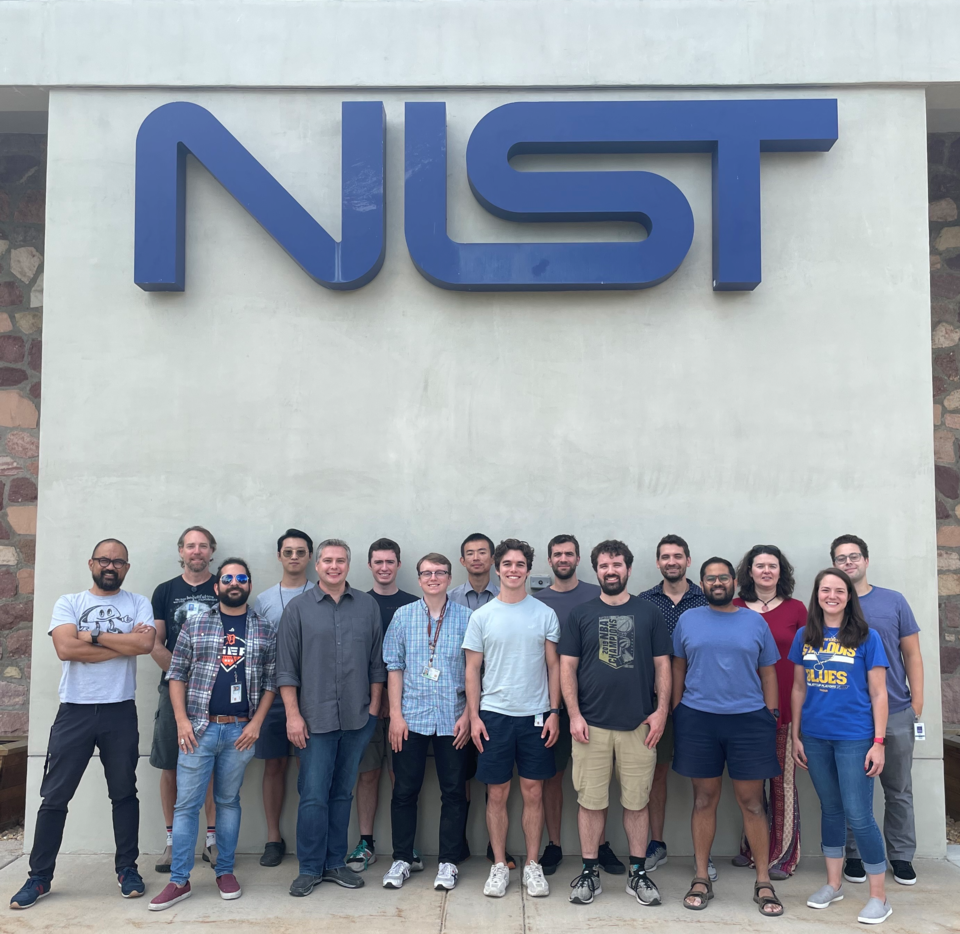Summary
Research on quantum information (QI) seeks to control and exploit exotic properties of quantum mechanics, and researchers are already generating "unbreakable" codes for ultra-secure encryption. Someday, quantum computers could solve problems impossible for today's and even tomorrow's most powerful supercomputers. This project takes advantage of superconductivity at low temperatures, Josephson junctions, mechanical elements, and careful circuit design to develop quantum bits (qubits), mechanical and electrical resonators, tunable couplers, and electrical measurement techniques to exploit the fundamental laws of quantum mechanics to improve computing, simulation, and high precision measurements.
Description

Photo credit: Florent Lecocq
NIST is home to a broad interdisciplinary program in quantum information science. NIST is exploring multiple implementations of qubits and strategies for taking advantage of quantum effects to compute, simulate, and improve fundamental measurement strategies. Josephson junctions are at the heart of the superconducting approach. Nonlinear behavior helps to create "artificial atoms" that are easy to manipulate and couple together. In addition, mechanical and electrical resonators can store and process quantum information. Work in this project falls into several research topics described below.

Research Topics
Superconducting Quantum Circuits —We are pursuing novel ways to process quantum information with superconducting circuits.
Tunable Parametric Coupling & Amplification —Parametric interactions are key to the tunable coupling of quantum circuits (essential for quantum gates), novel amplification schemes, and nonreciprocal transmission (enabling isolation and circulation).
Circuit Cavity Electro-mechanics — Opto- and electro-mechanical systems have been cooled to the quantum regime allowing coherent transfer or entanglement of light fields and mechanical motion, the conversion of microwave and optical fields, and show remarkably long mechanical lifetimes useful for the storage or manipulation of quantum information. The intrinsic parametric coupling processes enable noise evading amplification and enhanced detection of displacement, force, or acceleration.
Microwave Quantum Optics, Computation, & Simulation — We are actively pursuing ways to combine all of the above systems and techniques in order to develop hybrid approaches to investigating microwave quantum optics, quantum computation, and quantum simulation. These topics are of world-wide interest and are goals of NIST's Quantum Information Program. In addition, we are also pursuing the development of new technologies that enable quantum-enhanced strategies for precision measurement.

